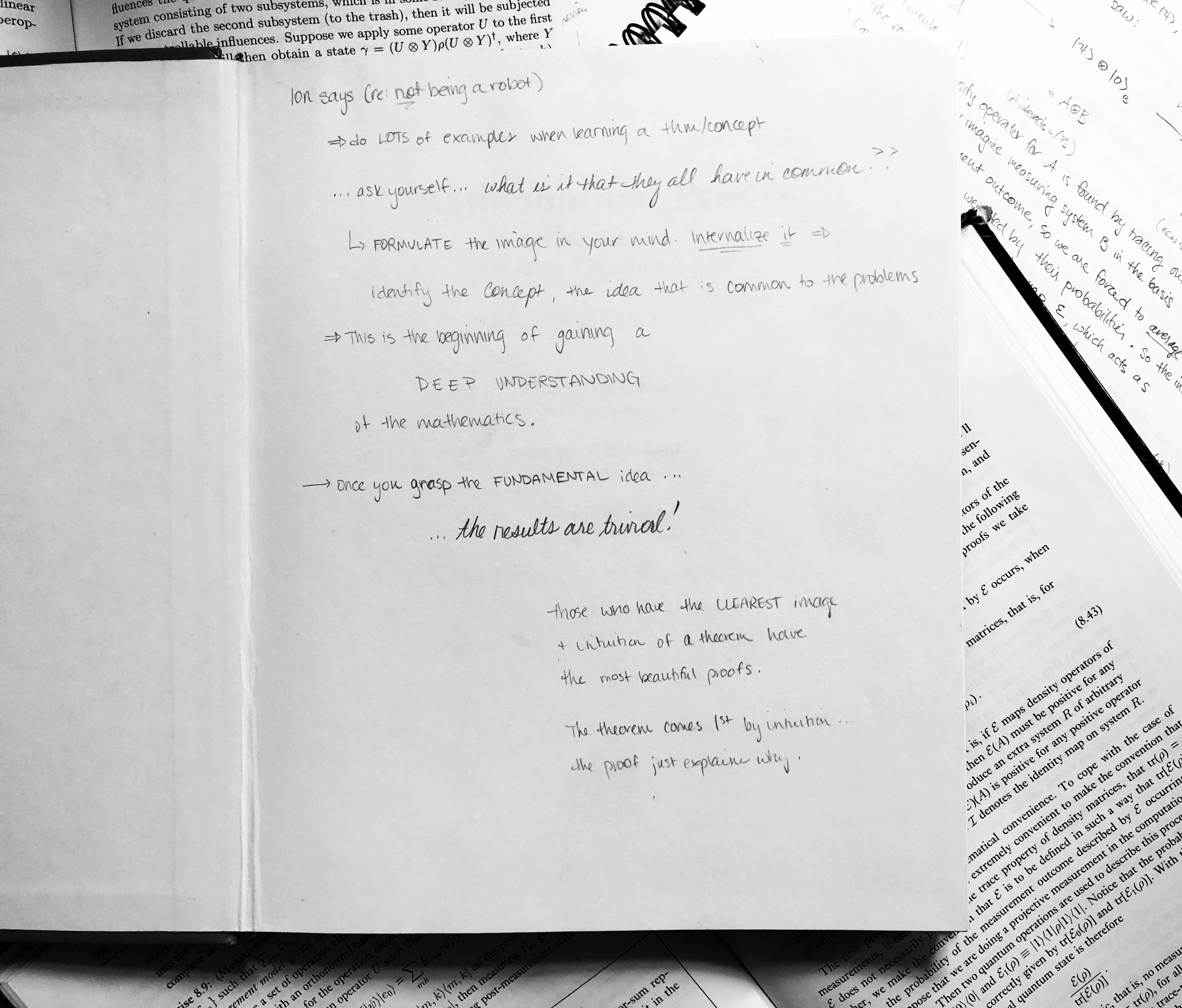Learning How to Learn Math
Once upon a time, while in college, I decided to take my first intro-to-proofs class. I was so excited. "This is it!" I thought, "now I get to learn how to think like a mathematician."
You see, for the longest time, my mathematical upbringing was very... not mathematical. As a student in high school and well into college, I was very good at being a robot. Memorize this formula? No problem. Plug in these numbers? You got it. Think critically and deeply about the ideas being conveyed by the mathematics? Nope.
It wasn't because I didn't want to think deeply. I just wasn't aware there was anything to think about. I thought math was the art of symbol-manipulation and speedy arithmetic computations. I'm not good at either of those things, and I never understood why people did them anyway. But I was excellent at following directions. So when teachers would say "Do this computation," I would do it, and I would do it well. I just didn't know what I was doing.
By the time I signed up for that intro-to-proofs class, though, I was fully aware of my robot-symptoms and their harmful side effects. By then, I knew that math was not just fancy hieroglyphics and that even people who aren't super-computers can still be mathematicians because—would you believe it?—"mathematician" is not synonymous with "human calculator." There are even—get this—ideas in mathematics, which is something I could relate to. ("I know how to have ideas," I surmised one day, "so maybe I can do math, too!")
One of my instructors in college was instrumental in helping to rid me of robot-syndrome. One day he told me, "To fully understand a piece of mathematics, you have to grapple with it. You have to work hard to fully understand every aspect of it." Then he pulled out his cell phone, started rotating it about, and said, "It's like this phone. If you want to understand everything about it, you have to analyze it from all angles. You have to know where each button is, where each ridge is, where each port is. You have to open it up and see how it the circuitry works. You have to study it—really study it—to develop a deep understanding."
"And that" he went on to say, "is what studying math is like."
I was floored. "Wow," I thought, "I want to understand math like that. I want to see things clearly." But robots don't have eyes. They can't see at all, much less clearly. (Yes, there's AI, but you know what I mean.) So this was even more motivation for me to change my perspective on mathematics.
Anyway, the other day I found my old intro-to-proofs textbook. Upon turning to the first page, I was surprised to see I had taken notes from that conversation! I had written them as a constant reminder for my newly-activated math brain as it began learning basics facts about proofs. I remember that day so vividly, and seeing the notes brought back a flood of memories.

I think this perspective—knowing that one has to fight with, struggle with, grapple with mathematics to see it properly, to internalize it, to identify the foundational ideas—was the most crucial thing I learned that year. Yes, I also learned about truth tables and how to write a proof by contradiction, but more importantly, I learned how how not to be a robot. I learned how to learn math. And for that, I am grateful.

A note to the reader
It turns out, though, that learning how to learn doesn't necessarily mean you'll learn faster. I am still no good at symbol-pushing or speed-computing, but my goals as a student changed long ago. I want to understand mathematics well. I want to see it with clarity. That requires work, and the work takes time.
What also takes time is finding the right words to use when sharing mathematics with others! This is something I love doing and is one reason why I started Math3ma several years ago. But faithful readers of this blog will notice that I haven't been posting frequently. That's because I am still putting into practice the very things mentioned in this post.
I like how Chris Olah says it: "I want to understand things clearly and explain them well." Understanding things clearly is a long process, as is finding a way to explain them well. And yet this is a deep desire of mine. What's more, the math I wish to share nowadays is of a different nature than the bite-sized morsels that I opened this blog with. The distillation process is a little lengthier now. This year, specifically, has kept me busy with several projects, including my little booklet and—most importantly—a PhD thesis (in progress), among other math endeavors. I haven't had much time for blogging.
I suspect my hiatus will only last for so long, though. I haven't forgotten that I began-but-never-finished a series on (co)limits. I want to circle back to that soon. I also have a few drafts that I plan to release ever so slowly. In the mean time, I just wanted to say a quick "thanks" to all of you for your patience, and for still visiting Math3ma, even when it's on the quiet side.
Thank you!
